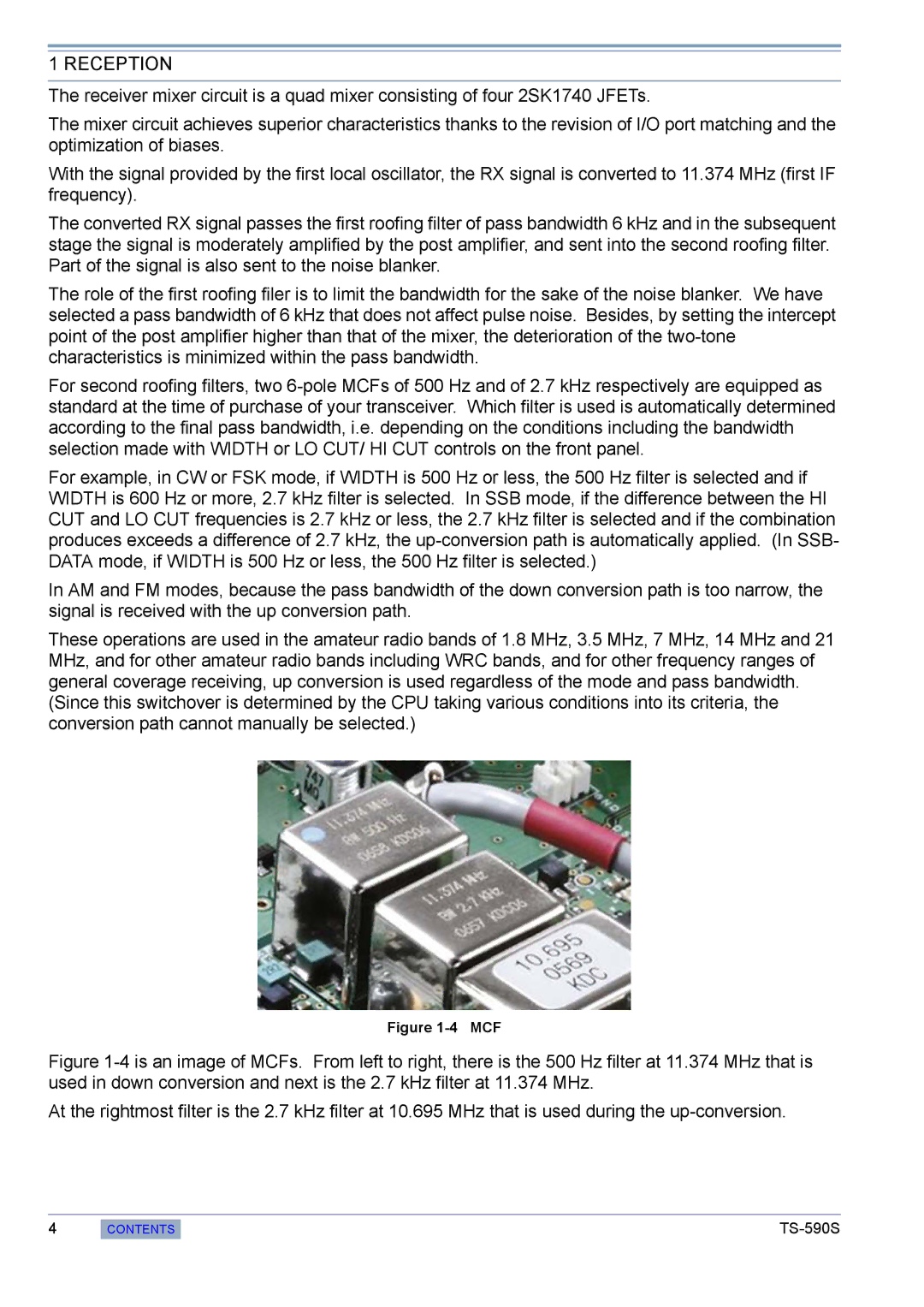
1 RECEPTION
The receiver mixer circuit is a quad mixer consisting of four 2SK1740 JFETs.
The mixer circuit achieves superior characteristics thanks to the revision of I/O port matching and the optimization of biases.
With the signal provided by the first local oscillator, the RX signal is converted to 11.374 MHz (first IF frequency).
The converted RX signal passes the first roofing filter of pass bandwidth 6 kHz and in the subsequent stage the signal is moderately amplified by the post amplifier, and sent into the second roofing filter. Part of the signal is also sent to the noise blanker.
The role of the first roofing filer is to limit the bandwidth for the sake of the noise blanker. We have selected a pass bandwidth of 6 kHz that does not affect pulse noise. Besides, by setting the intercept point of the post amplifier higher than that of the mixer, the deterioration of the
For second roofing filters, two
For example, in CW or FSK mode, if WIDTH is 500 Hz or less, the 500 Hz filter is selected and if WIDTH is 600 Hz or more, 2.7 kHz filter is selected. In SSB mode, if the difference between the HI CUT and LO CUT frequencies is 2.7 kHz or less, the 2.7 kHz filter is selected and if the combination produces exceeds a difference of 2.7 kHz, the
In AM and FM modes, because the pass bandwidth of the down conversion path is too narrow, the signal is received with the up conversion path.
These operations are used in the amateur radio bands of 1.8 MHz, 3.5 MHz, 7 MHz, 14 MHz and 21 MHz, and for other amateur radio bands including WRC bands, and for other frequency ranges of general coverage receiving, up conversion is used regardless of the mode and pass bandwidth. (Since this switchover is determined by the CPU taking various conditions into its criteria, the conversion path cannot manually be selected.)
Figure 1-4 MCF
Figure 1-4 is an image of MCFs. From left to right, there is the 500 Hz filter at 11.374 MHz that is used in down conversion and next is the 2.7 kHz filter at 11.374 MHz.
At the rightmost filter is the 2.7 kHz filter at 10.695 MHz that is used during the up-conversion.
4
CONTENTS
